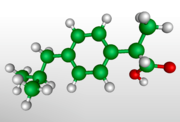Last summer, JOHN GRIBER and a team of fellow adventurers arrived in Tibet to battle the world sixth highest peak, Cho Oyu (Tibetan for turquoise goddess). His goal? To be the first American ever to snowboard the peak. He knew it wouldn't be easy. On his last trip to the mountain, the extreme elevation caused Griber to develop pulmonary edema, a lung condition usually associated with a heart attack. He realized the punishing elements and 27,000-foot elevation could kill him. But that was a risk he had to take in his quest to push past pain, nausea, and fatigue and leave an S-shaped signature on the mountain's otherwise blank slate.
As if scaling a deadly; live-mile-high mountain and snowboarding back down weren't challenging enough, JOHN GRIBER did it all while maintaining an exclusive journal of his feat for MF. Here, in his own words, he describes his thoughts on the record-setting feat.
SEPT. 10
Left around 8 a.m. headed for Camp 1 (21,100 feet). That's when the headaches and nausea started. The altitude just takes it right out of you. Sleep is a struggle. My appetite was good at Base Camp (18,800 feet), but as soon as you start getting higher, it becomes hard even to force water down. We're going to be spending 20 days on the mountain. It's hard to believe it will take that long for us to acclimate.
SEPT. 11
A horrible wave of nausea coursed through me earlier today. I fired down some anti-vomit pills and a few Advil and came out of it pretty quick. I was able to eat a few bites for dinner, but this incredible nausea comes at the drop of a hat. If someone coughs heavy, or someone's food doesn't look appealing, or even if a simple sip of water goes down wrong, it can fully set me off. And you can't do much without refueling.
SEPT. 12-13
Today we reached camp. Setting up the tent poles, I finally got to enjoy where we are. The glossy peaks just reach forever, and the views--remote, distant peaks that humans have never set foot on. I was suffering before, but then I saw the mountains in a different way. Now I'm appreciating where I am.
SEPT. 16-18
We made it to Camp 2 (23,390 feet) in about 5.5 hours--it's unreal how the sun makes your brain feel like it's cooking, and you can't escape it. My lips are so sunburned that a few times during the night they were stuck together. The last time I slept at this same spot is when I came down with pulmonary edema--so no matter how shitty I feel, it's gotta be better than that.
SEPT. 21-22
Heading up to Camp 3 (24,750 feet) and beyond with the plan to snowboard down. But my legs just won't cooperate. I'm blown away by how strong and solid you can be at lower altitudes and then feel so incapacitated higher up. There seem to be so many little battles that have to be won--at times, even something that seems so small as taking a few steps can throw off your balance.
THE RIDE DOWN I ended up boarding from about 26,000 feet down to about 20,000. You don't just launch off the mountain and yell "whoo-hoo" the whole way down I was making four or five turns at a time and then stopping and panting. The turns from Camp 3 to Camp 2 were unbelievable, though. When you go to those altitudes, there's no telling what kind of snow you'll get, but it was really fight, soft, and boot-top-depth powder. At 25,500, I was getting face shots--where the powder blows up on your chest and face. Looking back, honestly, there were times when I just wanted to be home, But it shows what you can do when you're committed to making your dreams come true.
GO
Cho Oyu, Tibet
Inspired to follow in Griber's footsteps--all 27,000 feet of 'em? Let expert guides do the same for you and your crew. Griber recommends the guides at ALPINEASCENTS.COM.
GET
Inferno Endurance 800+ fill down sleeping bag by The North Face
It includes a built-in sack for storing the sleeping bag, an eye-level timepiece pocket, and a hood that's adjustable with the tug of a single cord. Superfine down filling keeps it toasty in subzero temps, and at five pounds two ounces, it's literally featherweight. $649 @ THENORTHFACE.COM
LEARN
Altitude Adjustment
Explorers Club president and MF adviser RICHARD C. WIESE has been climbing for 30 years and has visited all seven continents. Here's what he says to expect when you first visit an extreme altitude:
HEADACHE
Keep aspirin on hand and usually you'll be able to deal with it. If it's so bad you're staggering, it could be a sign of cerebral edema (brain swelling).
LETHARGY
Be prepared for impaired performance the higher you get. Your body won't be able to perform the way you expect it to, and you may feel stupid or cloudy. The only way to get through it is to concentrate on every action, no matter how menial.
INCREASED HEART RATE
You may feel your heart racing even when your body is at rest. Don't worry; it's a normal side effect of high altitudes.
PULMONARY EDEMA
If you're coughing a lot but your throat is dry, you're probably OK. If it's a wet hack, your lungs are likely swelling and having trouble functioning. Head down the mountain immediately.
NAUSEA
Make no mistake, puking will happen. The more water you drink the better.
COPYRIGHT 2006 Weider Publications
COPYRIGHT 2006 Gale Group



